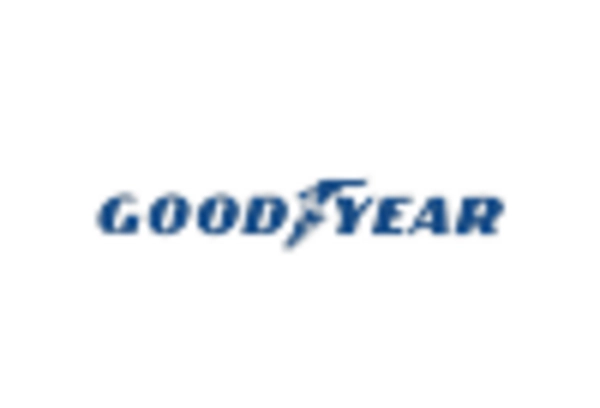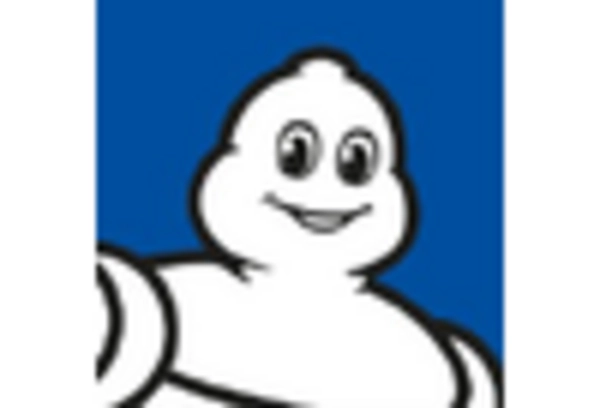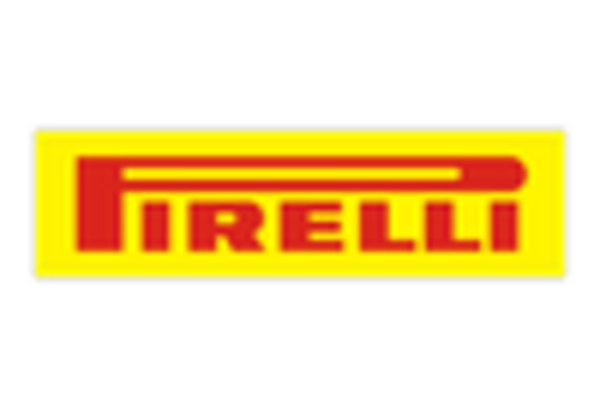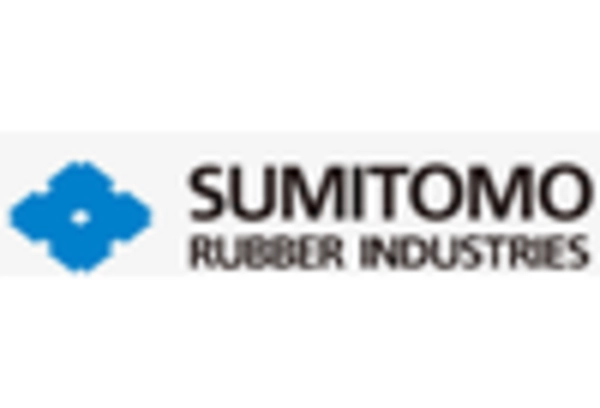Technological Innovations
Technological advancements in the processing and production of reclaimed rubber are likely to significantly influence the Natural Reclaimed Rubber Market. Innovations such as advanced devulcanization techniques and improved recycling processes have enhanced the quality and performance of reclaimed rubber. For instance, recent developments indicate that the tensile strength of reclaimed rubber can now rival that of virgin rubber, making it a more attractive option for manufacturers. Additionally, the integration of automation and smart technologies in production facilities is expected to streamline operations, reduce costs, and improve product consistency. As these technologies continue to evolve, they may further bolster the competitiveness of the Natural Reclaimed Rubber Market, attracting new players and expanding its application across various sectors.
Sustainability Initiatives
The increasing emphasis on sustainability appears to be a pivotal driver for the Natural Reclaimed Rubber Market. As industries strive to reduce their carbon footprints, reclaimed rubber emerges as a viable alternative to virgin rubber. This shift is underscored by the fact that reclaimed rubber can reduce energy consumption by up to 30% during production. Furthermore, the environmental benefits associated with using reclaimed materials resonate with consumers and manufacturers alike, fostering a growing demand. The Natural Reclaimed Rubber Market is likely to benefit from regulatory frameworks that promote sustainable practices, as governments worldwide implement stricter environmental policies. This trend not only enhances the appeal of reclaimed rubber but also positions it as a key player in the transition towards a circular economy.
Regulatory Support and Incentives
Regulatory frameworks and incentives aimed at promoting sustainable materials are likely to play a significant role in shaping the Natural Reclaimed Rubber Market. Governments are increasingly recognizing the importance of sustainable practices and are implementing policies that encourage the use of reclaimed materials. For instance, tax incentives and subsidies for companies that utilize reclaimed rubber can stimulate market growth. Additionally, regulations mandating the use of sustainable materials in various industries may further drive demand for reclaimed rubber. This supportive environment is expected to enhance the visibility and viability of the Natural Reclaimed Rubber Market, attracting investments and fostering innovation.
Consumer Awareness and Preferences
The growing consumer awareness regarding environmental issues is emerging as a vital driver for the Natural Reclaimed Rubber Market. As consumers become more informed about the environmental impact of their purchases, there is a noticeable shift towards products made from sustainable materials. This trend is particularly evident in sectors such as footwear, automotive, and consumer goods, where eco-friendly products are gaining traction. Market data indicates that products featuring reclaimed rubber are increasingly favored by environmentally conscious consumers, leading to a rise in demand. Consequently, manufacturers are likely to respond by incorporating reclaimed rubber into their offerings, thereby enhancing the appeal of the Natural Reclaimed Rubber Market.
Rising Demand from Automotive Sector
The automotive sector's increasing demand for sustainable materials is a crucial driver for the Natural Reclaimed Rubber Market. With the automotive industry accounting for a substantial portion of rubber consumption, the shift towards eco-friendly alternatives is becoming more pronounced. Reports suggest that the use of reclaimed rubber in tire manufacturing can enhance performance while reducing environmental impact. As automakers seek to meet consumer expectations for sustainability, the incorporation of reclaimed rubber into their products is likely to rise. This trend not only supports the Natural Reclaimed Rubber Market but also aligns with broader industry goals of reducing waste and promoting sustainable practices.


















Leave a Comment